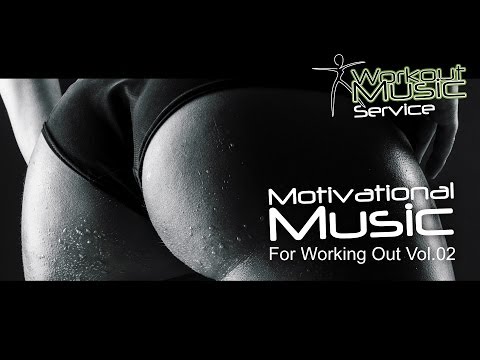
>> Hello and welcome My name is Dawn Durham and I am a contributing, educational consultant to Pennsylvania's Training and Technical Assistance Networks, multitiered system of support MTSS initiative
This session you are about to view is referenced as a quick pick It is intended to help you build your knowledge base around a specific topic Today we're going to be talking about transactional and transformational leadership practices and their relevance within viable and sustainable tiered systems of support The mission of the Pennsylvania Training and Technical Assistance Network, it is to support the efforts and initiatives of the Bureau of Special Education and to build the capacity of local educational agencies to serve students who receive special education services Our goal for each child is to ensure individualized education program, IEP teams begin with the general education setting with the use of supplementary aides and services before considering a more constrictive environment
Pennsylvania's multitiered system of support is a standards aligned, comprehensive school improvement framework for enhancing both academic and behavioral health outcomes for all students In Pennsylvania, response to intervention, RTI, refers to the methodology that is used to determine how slow is slow and how low is low as an alternative to building achievement discrepancy within the specific learning disability, LSD determination process Pennsylvania's MTSS model, represents an integrated system, meaning that cross disciplinary teams use a problem-solving process to facilitate shared ownership for achieving academic and behavioral goals using a continuum of effort and space practices and reliable and valid data sources The academic side of MTSS, standards aligned, high quality core literacy, mathematics and STEM instruction, is delivered within the context of culturally responsive practices, positive behavioral supports and family engagement There are key components that form the foundations of Pennsylvania's MTSS framework
If a well-articulated, well designed tiered system is in place, you should realize, efficient, effective and sustainable outcomes Today we will discuss the role that transactional and transformational leadership plays within a tiered system These practices will be nested within the larger context of first and second order change as we work to sustain MTSS implementation and outcomes Leadership has been identified by the National Implementation Research Network, NIRN as one of the key implementation drivers within this system's change process Particularly, if we want our efforts to be long lasting or what we call sustainable
Within tiered systems of support, we view leadership as an activity that is most impactful when it is highly visible and uniformly shared and/or distributed Today, we are going to focus on two types of leadership, transactional and transformational I would also like to encourage you to reflect on your leadership skills and how you might intentionally channel your unique traits and actions toward effective MTSS implementation If you are a member of the school community, then you are naturally a member of the continuous school improvement team and a leader So, what exactly do we mean by transactional and transformational leadership, and what is the difference between the two? Let's explore transactional leadership first
Transactional leadership is characterized by focus on desired outcomes, recognition of accomplishments and provision of praise and constructive feedback to staff Transactional leadership is about actively monitoring standards set forth for the team and addressing any issues that arise Transactional leaders are often in response or management mode to real situations in real time Constructive transactional leadership is when a leader sets goals, clarifies outcomes, recognizes accomplishments, gives praise when necessary and provides feedback This form of transactional leadership is optimal because it is the most effective out of the different types of transactional leadership
When we see transactional leadership operationalized within tiered systems, it might look like the following, allocating 90 minutes for reading instruction and allocating 60 minutes for core math instruction A school wide positive behavior support plan has been adopted and has reinforced consistently Professional Learning Communities, PLCs have been established around specific topic areas In contrast, transformational leadership is focused on transforming the system, evolutionizing, not revolutionizing the system, so to speak Transformational leaders establish challenging expectations and influence from a position of moral, imperative in ethics
They simulate new ways of looking at old problems for coaching, mentoring and empowerment Transformational leaders do not react to the environment Instead, they join with others to co-construct and/or co-create a more ideal environment based upon collective visioning Transformational leadership practices serve to shape the culture of the school For example, in a tiered system of support, the adoption and implementation of evidence-based practices match to student needs is non-negotiable
In literacy for example, practitioners would be deepening their understanding of the science and application of the empirical reading research using resources such as language essentials for teachers of reading and spelling, letters and the methodologies that are most effective for teaching reading, writing, speaking and listening Let's pause for a minute Think about the current tools and resources that inform professional learning in your own practice Were they found and peer review journals and/or derived from the compelling and converging biological and behavioral research that [inaudible] conducted over a period of 15 years of language based deficiencies Secondly, transformational leadership within tiered systems, presumes an eco-systematic orientation meaning that all stakeholders are focused on manipulating variables within their control, such as the curriculum, instruction and the environment
There is not a focus on innate pathology within the child's or the family or in other variables that are not within our control Thirdly, there's a tendency to over assess an education In a tiered system of support, assessment is administered intentionally to inform instruction intervention, otherwise called, response to intervention If a particular measure does not lend itself to instructional and intervention improvement, then it is not administered Let's pause again
Do your measures directly translate to instructional changes and/or intensification during classroom and supplemental intervention opportunities Next, shared leadership and/or ownership is the kingpin of transformational leadership Tiered systems rely upon individualized and collective skill and will that is cultivated over time, knowing what to do, when, why and for whom is called reflective eclecticism Practitioners at all levels, tier 1, tier 2 and tier 3, need access to a comprehensive pharmacy that is fully stocked with a range of evidence-based medicines and the content knowledge to apply those medicines to different needs or conditions if you will, at different times in a student's learning trajectory In the last example of transformational leadership, sustainability or institutionalization of any set of practices, necessities that we planned for sustainability from the beginning
In a tiered system, that means engaging all stakeholders in co-constructing what school improvement was going to look like in their setting or context This means that stakeholders embrace conflict, work through conflict productively, build consensus and approach school improvement as a continuous cycle Teams celebrate wins along the way and understand that sustainable change is a function of persistence and practitioner skill and will applied over time If key people in your system left today, would your tiered system go with them or would it remain? So, to summarize, transactional and transformational leadership work synchronously within the system's changed process, both are necessary The goal is to counter balance day to day transactions like scheduling and the establishment of tiered services and supports within bigger imperatives, like helping all students access high quality, core literacy instruction within culturally responsive, positive school climate
Now, I want to segue to two types of change First order and second order change First order change is a change that is an extension of past practice It is an incremental change and is usually the most obvious next step, fine tuning if you will or what is already in place or in motion First order changes are usually not met with resistance because they generally do not push on our fundamental beliefs
Second order change usually manifests as a visible departure from past practice Second order change happens, because we see new ways of thinking and acting We see different ways of solving problems These are examples of when first order changes become second order changes On this slide, you can see the transition from simply establishing a structure to where the use of those structure is to accomplish a bigger goal
Look at the first example Instituting smaller classes Research has shown that reducing class size has the potential to be beneficial if practitioners capitalize on the opportunity to enhance their instruction and customize support for students, simply reducing the number of students per classroom, however, does not guarantee more effective instruction or a more positive environment You can see that class reduction and in of itself is a first order change It only becomes a second order change when there's evidence that students are reaching higher levels of proficiency and classroom climate has improved
Similarly, a multitiered system of support is a technical structure It is comprised of technical components such as universal screening, standards aligned high quality core instruction, family engagement, professional learning and others Second order change is realized through the implementation of a tiered system when for example, universal screening data goes beyond data collection to the interpretation of the data to inform the health and changes that we need to improve core math, writing or reading instruction Another example of second order change is when higher percentages of students are receiving what they need at tier 1 and lower percentages of students need tier 2 or tier 3 supports over time I want you to stop for a moment to think about your MTSS implementation efforts
Are you experiencing mainly first order or second order changes? Is your school stuck on implementing the technical aspects of a MTSS framework? What do you need to do to secure in order to realize a long lasting second order changes? So, to bring this all together, first order changes require transactional leadership Second order changes require transformational leadership As I mentioned, both are necessary to sustain continuous school improvement processes and outcomes Think about what we just learned about transactional and transformational leadership in first and second order examples of change within tiered systems Is your MTSS implementation a first or second order change? A helpful way to approach this question is to consider the following
Do your MTSS efforts build upon past school improvement efforts or are your efforts radically different? Remember, that the greater the magnitude of change is required of the part of your colleagues, the less likely the change is to occur than to be sustained Is there a collective skill or will or do you have limited numbers of practitioners who are willing to problem solve and experiment with matching evidence based practices to needs and adjust instructional intensity based upon common data sources that are heavily relied upon in a tiered system such as curriculum based measurement? Is your pharmacy limited with extra strength Tylenol options or do you have neurosurgery options for the most challenging to treat issues? Often, there is a mismatch between what students need and what we use to meet their needs Is that the case? How do you know? What will need to happen in your current MTSS model to move your efforts to first order to second order change? Let's get back to transformational leadership must have traits that will help you leverage your efforts and realize second order or long-lasting change On the slide, the items highlighted in blue, represent the most salient characteristics or traits of effective leaders For decades, the issue of leadership has been researched and we now appreciate the strong relationship that exists between leadership and positive school outcomes
These traits matter and are worth your time and effort to cultivate To summarize, a transformational leadership, is someone who is guided by moral imperative and in an adaptive, flexible orientation Transformation leaders are change agents through and through and embrace problems and problem solving within the context of the school, families and a larger community Which of these seven traits would you possess, and/or would you like to cultivate? I would like to leave you with some time to review the quality indicators of a well oiled MTSS framework These indicators must be contextualized within the focus of our conversation today
Each school's transactional and transformational leadership practices Take a few moments to review this slide and the following slide, to further reflect upon your implementation status These indices are for you and your team to reflect upon as you move forward with continuous school improvement efforts If you have evidence that you are able to maintain and sustain these outcomes within your system, then you have become the expert in transformational change within tiered systems Lastly, I want to take a moment to share a valuable resource with you
The PaTTan website houses a great wealth of information for practitioners Please click on educational initiatives then multitiered systems of support and our live binders I want to share with you how to access the live binders on the MTSS webpage through the PaTTAN website If you head to the PaTTAN website and select educational initiatives, you'll want to click on multitiered systems of support On the right-hand side, you will see live binders for the different series we have going on in MTSS
The live binders are really repositories of information for the different series If we want to select access for information and we'll scroll on down to see links to the different series binders that we have What I want to draw your attention to, specifically for this quick pick, is the MTSS boot camp live binder and you'll notice the access code is there for you, so we'll click that link We will go ahead and put in our access code and it will bring up the live binder for the boot camp Now, you have access to all of the materials in here underneath these tabs
What I want to bring your attention to is the sustainability tab If I click that, it brings up two additional folders I want to take you to the National Implementation Research Network or NIRN Here, it connects us to the implementation hub This resource has a valuable information found in print, in video format and training modules that you and your team can be using to access information and draw from in regards to maintaining and sustaining change within the MTSS framework
I think you'll find this information to be very helpful It's not only a great place to start, but it's a good way to maintain that change and continue to grow through the MTSS framework Again, you have access to all of this material, so please be sure to bookmark this page and use it as much as you feel you need to I'm glad you took time to think through the MTSS framework and how transactional and transformational leadership are both key components of change Thank you for your time today









